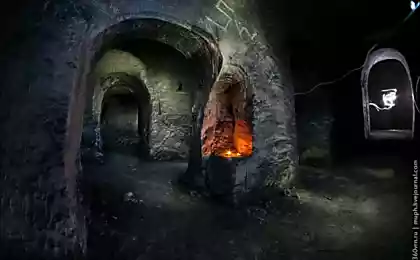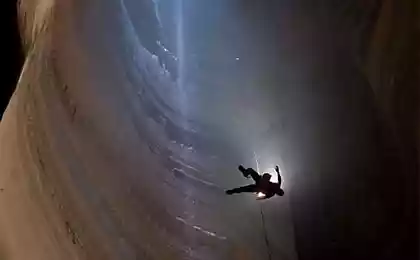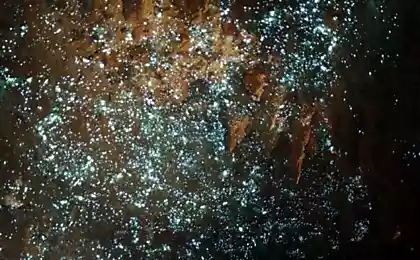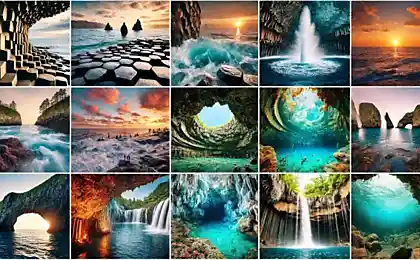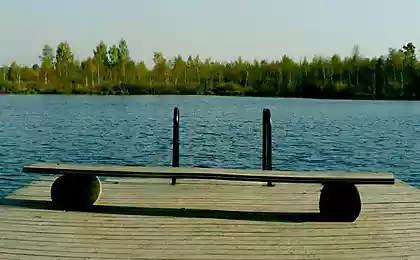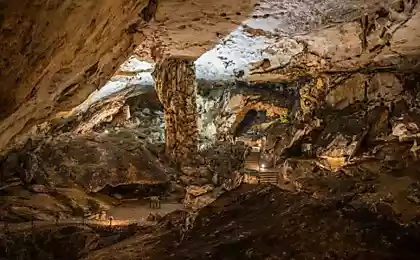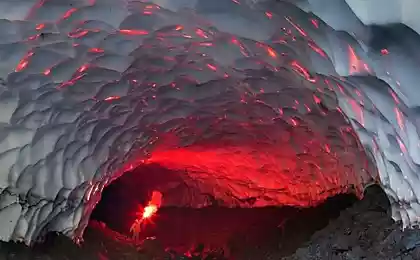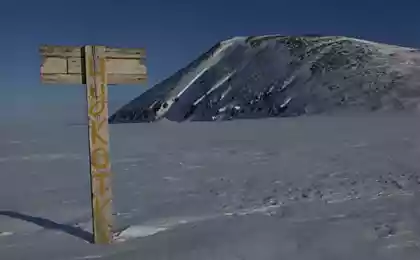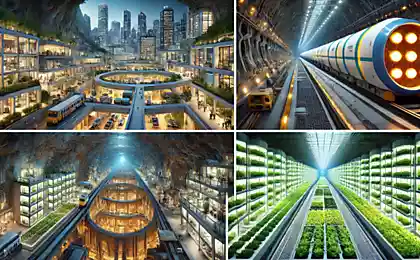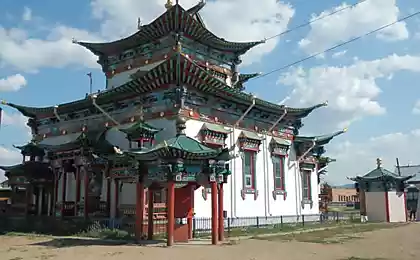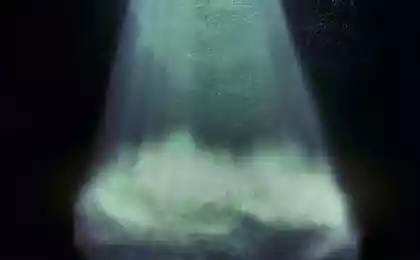288
Journey into the depths: the most unusual underground locations in the world
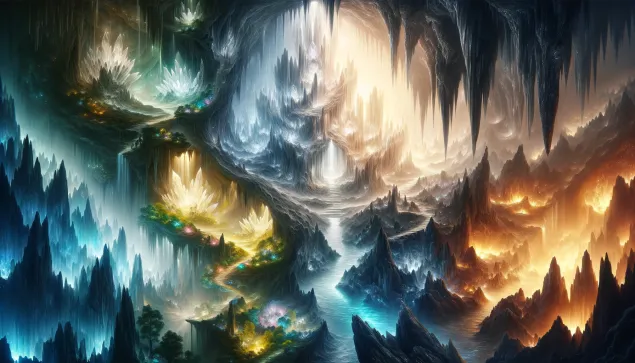
Introduction. Deep beneath the surface of the Earth lies a whole world that many of us have a very vague idea of. Caves with giant stalactites, ancient mines with bizarre passages, underground cities that can accommodate entire settlements – all these locations have amazed researchers and travelers for hundreds of years. At first glance, they seem like scenery for science fiction films, but are actually the result of millions of years of geological processes and unique historical circumstances. In this article, we’ll take you on a virtual journey through some of the world’s most impressive underground sites, discovering how they were discovered and what role they play in modern culture and science.
Shondong Cave (Son Dong), Vietnam
Surely, many have heard about the existence of large karst caves, but hardly anyone expected to meet under the ground a whole "world" with its own clouds, rivers and even forests. This is how often describe the Shondong cave in Vietnam, which is part of the largest karst system of the Phongna Kebang National Park. It was discovered relatively recently – in the early 1990s, locals accidentally stumbled upon the entrance, but for a long time no one dared to explore it. A full-fledged expedition with the participation of specialists from National Geographic was held only in the late 2000s.
- Giant halls: Some of them are so huge that there are skyscrapers 40-50 floors high inside.
- Underground river: A powerful water flow flows along the bottom of the cave, and a constant fog forms clouds near the vaults.
- Unique ecosystem: Under the natural light mines grow the whole jungle, and inside live rare species of animals.
How to get there and what to consider
The way to Shondong is connected with the passage of difficult mountain routes and the obligatory escort of licensed guides. Adventure lovers pay large sums to immerse themselves in the atmosphere of underground fiction for a few days. The organizers strive to preserve the natural environment in its pristine form: any garbage or equipment is brought and taken out by groups under strict control, and the number of guests per year is strictly limited.
The “Crystal” Cave of Nika, Mexico
In the state of Chihuahua (Mexico) on the territory of the Naika mine, which was founded in the late XIX century for the extraction of lead-zinc ores, in 2000 there was a truly grand discovery. The miners discovered a hall with giant selenite crystals - some of them exceeding 10 meters long and weigh several tons. The conditions inside the cave are extremely difficult for humans: the temperature exceeds +45 ° C, and the humidity reaches 90-100%. This makes research a real challenge for scientists and enthusiasts.
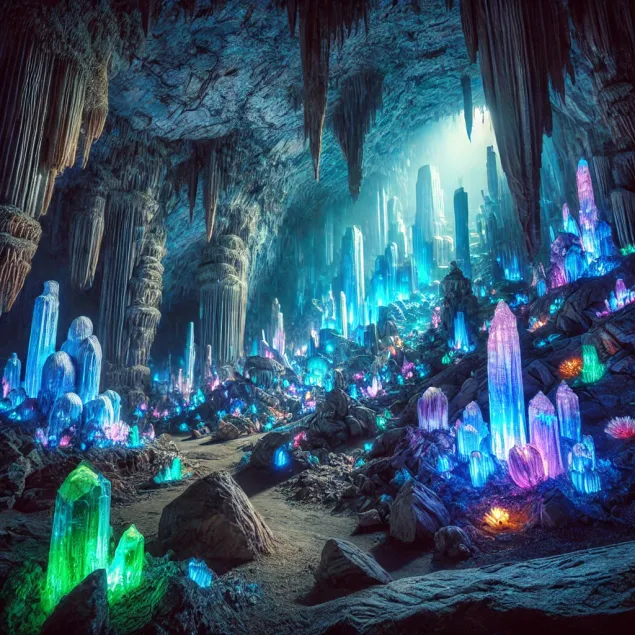
The reason for such a giant crystal size is a unique set of temperature-hydrothermal conditions. Waters rich in calcium sulfate (the basis of gypsum) slowly deposited the mineral in the same place over hundreds of thousands of years, allowing the crystals to reach such large sizes.
Interesting facts
- Difficult access conditions: In order to work or just be in a cave, researchers need special refrigerated suits and breathing apparatus.
- Time limits: Without special equipment, a person can lose consciousness due to heat and humidity in 10 minutes.
- Closed to tourism: To this day, only scientific expeditions and film crews have access to the crystal room with the permission of the government and the mine owners.
Derinkuyu and other underground cities of Cappadocia, Turkey
Cappadocia is famous for its volcanic tuff landscapes, amazing “stone pillars” and, of course, underground cities. Derinkuyu is one of the deepest and most famous, discovered relatively recently, in the middle of the XX century, when a local resident decided to expand the cellar in his house and came across an extensive network of passages and rooms.
- Multi-level structure: The city has more than 10 floors, which go underground to a depth of about 60 meters.
- Accommodation: The researchers found not only living rooms, but also wineries, churches, grain storage.
- Protection mechanism: The narrow corridors could be easily blocked with stone “jams” in case of enemy attack, turning the city into an impregnable fortress.
Wieliczka: salt mines near Krakow, Poland
One of the most popular tourist destinations in Poland is not a medieval castle or a picturesque park, but an underground labyrinth of Wieliczka salt mines. The extraction of salt here began in the XIII century and continued until recently. Over hundreds of years, giant halls and corridors have formed in the mines, decorated with sculptures, bas-reliefs and even operating chapels carved from salt walls.
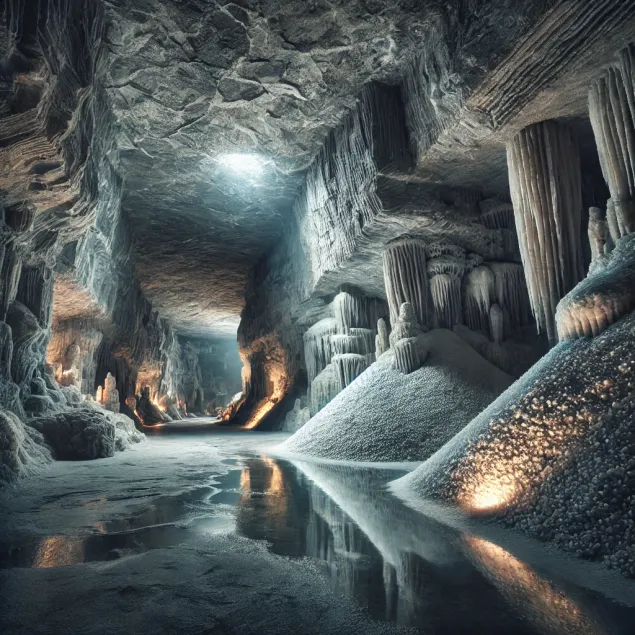
- UNESCO Monument: Wieliczka mines are included in the list of World Heritage sites and annually attract more than a million tourists.
- Unique microclimate: Under the ground there is a special atmosphere saturated with salt ions, which, according to some experts, has a beneficial effect on the respiratory tract.
- Length of moves: The total length of the underground galleries of the mine is more than 200 kilometers, although only a small part is available to visit.
Waitomo: Fireflies Caves in New Zealand
We end our journey with a brighter place, although it is hidden underground. Waitomo is a cave system on New Zealand's North Island known for the stunning "star skies" that create fireflies colonies. In total darkness, the ceiling of the cave resembles a night sky with millions of twinkling lights.
Scientists explain this phenomenon as a special stage in the life cycle of insects Arachnocampa luminosa, when their larvae emit light to attract prey. Like living magic lamps, they form an incredible “light curtain”, mesmerizing tourists. A walk through the cave is usually carried out by boat, and the complete silence and surrounding darkness only enhance the impression.
Some facts about Waitomo
- First mention: The existence of the cave and the “luminous river” was told by local Maori. For the scientific world, it was discovered by the English researcher Fred Mace at the end of the XIX century.
- Link to eco-tourism: The management of the cave is carried out in conjunction with the local indigenous population, observing traditions and protecting the fireflies colony from excessive interference.
Conclusion
The world under the ground is a real storehouse of amazing life forms, engineering solutions and stories that have not yet been fully revealed to humanity. Giant halls with natural sculptures, crystal palaces and labyrinths carved by human hands – all this shows how diverse and fragile our planet is. Such locations are becoming popular among tourists, but require careful treatment and strict access regulation to keep them in their original form.
From the Vietnamese jungle in the depths of the Shondong cave to the underground cities of Cappadocia designed by our ancestors, each place harbors a unique atmosphere and a whole layer of history. If you ever decide to make a trip to such sites, it is worth remembering the importance of environmental safety and respect for the work of researchers and local communities who make it possible to get acquainted with these wonders. Who knows, there may still be something under the ground in our land that will capture the imagination of future generations?
Emotional Intelligence: Understanding and Managing Your Feelings
Developing awareness through breathing practices
